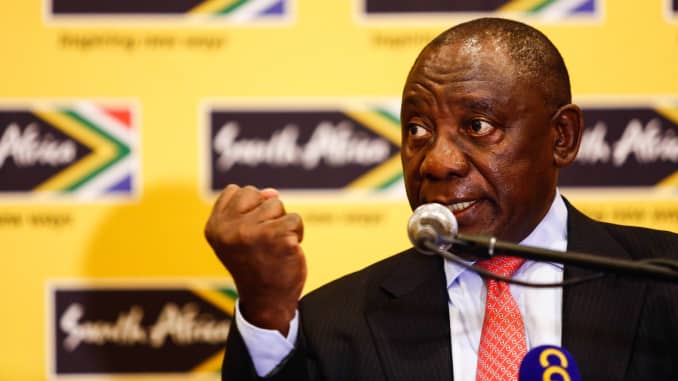Key Points
- South Africa to downgrade lockdown measures to level three on June 1.
- This means a full reopening of all manufacturing, mining, construction, financial services, professional and business services, information technology, communications, government services, and media services.
- Around 8 million South Africans will be sent back to work, out of the country’s 58 million people.

South Africa will downgrade its coronavirus lockdown measures to level three on June 1, marking what President Cyril Ramaphosa called a “significant shift” in its approach to the pandemic.
The move commences the full reopening of all manufacturing, mining, construction, financial services, professional and business services, information technology, communications, government services, and media services. Wholesale and retail trade will also be fully opened, including in the informal economy. All in all, this relaxation of the alert level sends around 8 million South Africans back to work, out of the country’s 58 million people.
Businesses reopening will be subject to “strict health protocols” and social-distancing measures, and Ramaphosa said in a televised address on Sunday that the government is “finalizing a number of sector protocols” mandating companies to implement relevant measures to curtail the spread of the virus.
Restrictions on public gatherings and “sectors where the risk of transmission is high” will remain in place, while special measures will also apply to hotspot areas with more than five infections per 100,000 people.
These areas will still be subject to the downgrading of restrictions, but specialist teams and interventions will be allocated to at-risk regions and Ramaphosa suggested that any particular region could be upgraded back to a four or five alert level if its infection rate spikes.
Despite the decision, Ramaphosa was keen to stress that the country has not yet overcome the virus. With 23,615 cases and 481 deaths as of Tuesday afternoon, according to Johns Hopkins University data, South Africa remains the most affected nation on the continent.
In Sunday’s address, Ramaphosa warned that “the risk of a massive increase in infections is now greater than it has been since the start of the outbreak in our country” and said the state of the pandemic in South Africa “is going to get much worse before it gets better.”
While the lifting of measures was unsurprising, given that the government had set out its roadmap for reopening earlier this month, the confirmation has been generally welcomed, according to Louw Nel, political analyst at NKC African Economics.
“The lifting of the lockdown had become increasingly politicized, with the official opposition, the Democratic Alliance, making it a central tenet of their messaging and ramping up the pressure on government,” Nel highlighted in a note Monday.
Nel said South Africa is set to enter a “crucial and inevitable stage” in its response to the Covid-19 pandemic.
“The lockdown has given the health sector time to prepare for the inevitable surge in infections, and the coming weeks and months will severely test the plans and contingency measures put in place during this period as South Africa gets back to work,” he said.

